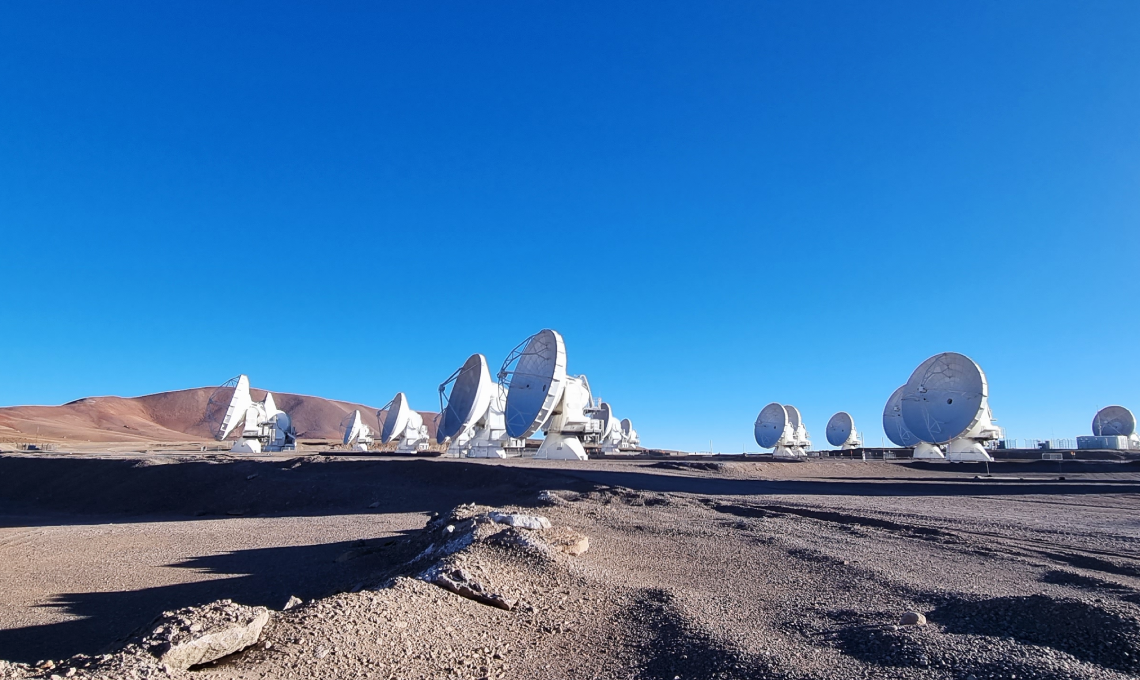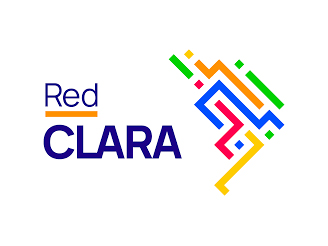Since its operational launch in 2013, the ALMA Observatory has been connected to REUNA, viewing REUNA as a strategic partner in addressing the significant technological and operational challenges of connecting the world’s largest radio telescope to global research and education networks. The goal is to swiftly and securely transport the enormous amount of data generated daily by the telescope to Santiago (where its main archive is located) and from there to its regional archives in East Asia, Europe, and North America.
As part of this partnership, both institutions have established a new agreement to install and operate a Point of Presence (PoP) of the REUNA network in the technical building of the ALMA Operations Site (AOS) on the vast Chajnantor Plain, in the north of Chile. The execution of this project commenced in 2023, with REUNA equipment installed at AOS, currently undergoing testing.
The implementation of this PoP marks a milestone, being the first node belonging to a National Research and Education Network to operate at an altitude of over 5,000 metres above sea level. Its purpose is to connect all the projects located near ALMA –representing scientific interests from countries in Asia, Europe, North America, and South America– to the high-speed REUNA network. This connection will allow the generated data to be sent almost in real-time to anywhere in the world where it is needed. Simultaneously, having robust and low-latency connectivity will enable these centers to operate their instruments remotely, saving resources and ensuring the continuity of their functions, even in extreme geographical and environmental conditions.
The first institution to sign an agreement to connect to REUNA is the CCAT Observatory, composed of Cornell University and a German consortium formed by the University of Cologne, the University of Bonn, and the Max Planck Institute for Astrophysics. Its main component is the “Fred Young Submillimeter Telescope” (FYST), currently under construction on Cerro Chajnantor. While its first light is expected in 2024, a conceptual traffic test between the REUNA PoP and the University of Cologne, connected to Germany’s NREN DFN, has already been conducted. This test used a 1 Gbps channel for data transfer, achieving an average speed exceeding 930 Mbps, resulting in a great success.
From a technical standpoint, the execution of this project presents a significant challenge that can only be overcome through the cooperation of all involved parties. As Albert Astudillo, REUNA’s Technology Manager, explains: “The physical connectivity for each of the astronomical projects will be achieved through a synergy of efforts from various stakeholders. Depending on the mountain where the observatory is located, they collaborate to provide the necessary infrastructure to achieve the ultimate goal, which is a last-mile optical fiber connection. Once the data is received at the Chajnantor PoP, it will be transported to Antofagasta, and from there, through REUNA’s backbone, to Santiago, and then transferred abroad via International Research and Education Networks.”
For over 20 years, REUNA has worked in collaboration with major astronomical projects in Chile, leveraging its expertise in implementing and operating digital network infrastructures designed specifically to meet their needs. Some examples include: the Vera C. Rubin Observatory of AURA, currently under construction in the Coquimbo region, which will generate approximately 20 terabytes of data per night; the Paranal and La Silla observatories (both of ESO), CTO and Gemini South (both of AURA), and Las Campañas Observatory.
This story was first published in Red en Acción magazine
For more information, please refer to the brochure: Point of Presence in Chajnantor for Research and Education
Featured image: The world’s highest R&E network node is to be installed on the Chajnantor plain in the Atacama Desert. Photo credit: REUNA–Carolina Muñoz.








